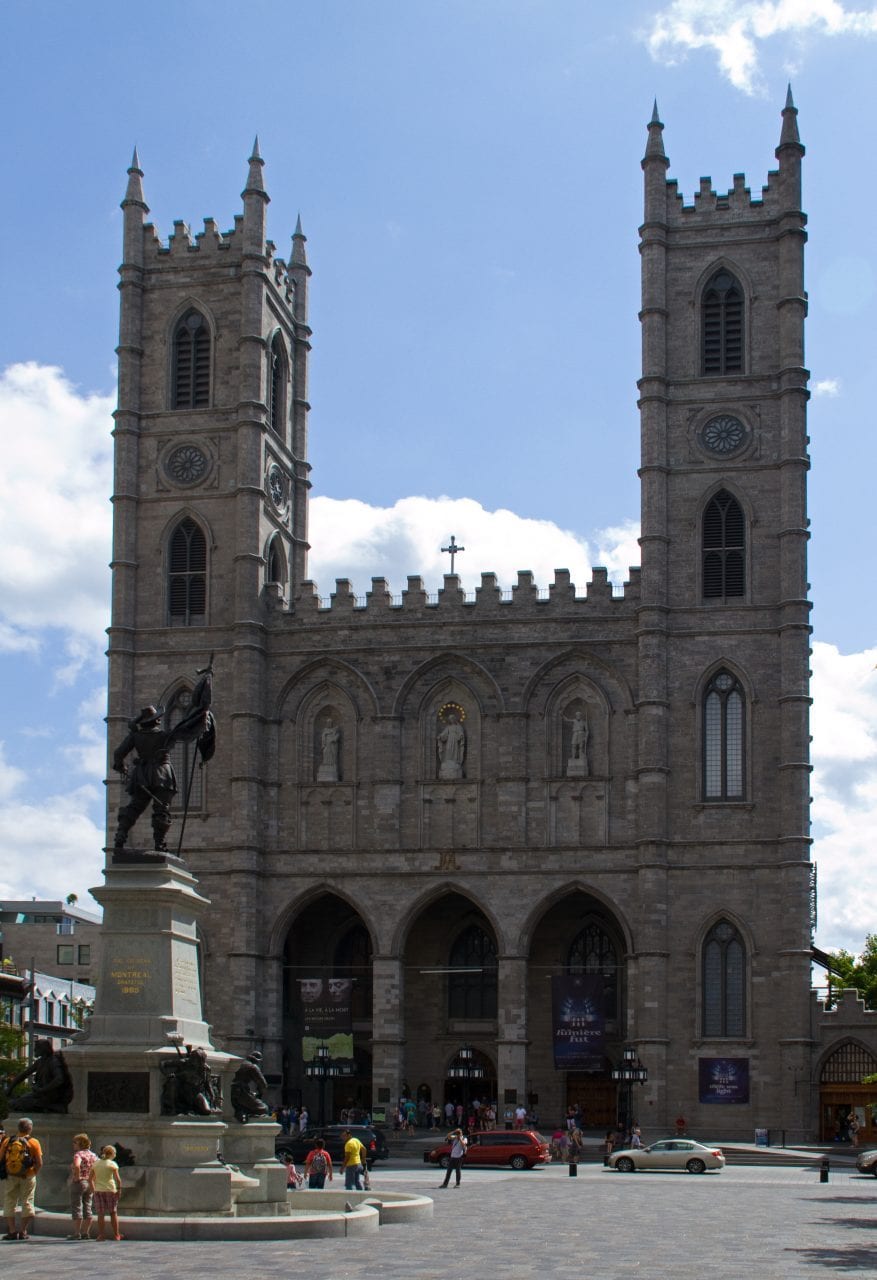Notre-Dame Basilica of Montreal, a treasure of Quebec’s religious heritage

The Catholic faith has long been at the centre of Francophone culture in Canada. The Notre-Dame Basilica of Montreal, a masterpiece of Gothic Revival religious architecture in North America built between 1824 and 1829, provides exemplary proof of the religious fervor that was shared by the clergy and the faithful at the time. Its interior decoration, which was restored between 1870 and 1900, is a marvel. It reflects the grandeur and splendor of God the all-powerful and compassionate. It arouses both admiration and emotion. Its polychrome wooden decoration, inspired by the Sainte-Chapelle of Paris, is also full of lessons for those who observe it closely. Many symbolic representations evoke Catholic doctrine, and a number of stained glass windows illustrate the history of Montreal. Hundreds of thousands of tourists visit this magnificent church every year.
To learn more…
Welcome to paradise
When we enter the Notre-Dame Basilica of Montreal for the first time, we feel the same (possible) enchantment we would feel if we entered paradise. The astonishing splendor and warmth of the church’s decoration fills visitors with emotion. The vaulted ceiling, blue and decorated with a constellation of stars, the refined elegance of the chancel, the high altar and the finely sculptured altarpiece, the polychrome opulence of the side aisles and of the pillars that support them, all seem unreal. What other church has the same powerful and mysterious charm? Welcome to the Notre-Dame Basilica of Montreal.
Sculptor and architect Victor Bourgeau, assisted by sculptors Louis-Philippe Hébert and Henri Bourriché, produced this splendid decor starting in 1872, some 40 years after the first version of the church was completed. The person behind this initiative was Rousselot, a parish priest who had just returned from visiting the Sainte-Chapelle in Paris that year. The romantic spirit of the time inspired this recourse to emotion as the foundation of faith and piety.
The basilica is larger than the average church, with its double aisles on each side of the nave. Although the basilica can accommodate up to 10,000 people, it nonetheless gives an impression of intimacy. It is profoundly pleasing; it both attracts and welcomes the visitor.
Evolution of a cultural marriage
This magnificent example of French Canadian architecture embodies the multicultural influence that characterizes Quebec society. At the beginning of the 19th century, when the basilica was first constructed, Quebec was still no more than a British colony known as Lower Canada. The Sulpicians, who were responsible for this founding parish of Montreal, hired an American architect of Irish origin, James O’Donnel, a Protestant from New York (who later converted to Catholicism), to replace the parish church, which had become too small. They chose O’Donnel because he was inspired by a British cultural current that was becoming increasingly popular, the Gothic Revival, which was pleasing to the Sulpician clergy both in the United States and in Montreal. This British accent is particularly visible in the exterior of the church, with its spires in the form of towers. The original interior of the church, which was not pleasing to the French Canadian faithful, was replaced, as we have seen, by a decor of French inspiration.
This marriage of cultural influences continued in the 1980s, when following a big fire, a monumental sculpture was added to the Gothic Revival box structure of the chapel of Notre-Dame-du-Sacré-Cœur, adjacent to the basilica itself. This sculpture reflected contemporary design and was produced by a Quebec sculptor, Charles Daudelin, who was very much in tune with what was going on in international contemporary art. The harmonious masterpiece of the Notre-Dame Basilica gives expression in its own way to the cultural fusion that characterizes the historical development of Quebec, where Indigenous, French, British, American and now worldwide influences are harmoniously combined.
Deep roots in Quebec society
The Notre-Dame Basilica of Montreal continues to occupy a central place in Quebec society, even though religious practice is today in considerable decline and a number of elements that are part of the religious heritage are threatened. Francophone Catholics have invested a great deal in places of worship, both in Quebec and elsewhere in Canada, and it is impossible to preserve and highlight all this religious heritage. However, the Montreal basilica, which embodies the fervent Catholic past of the French Canadians, continues to hold a special place in the hearts of Quebecers.
Various important events continue to take place in the basilica: national funerals, such as those of Pierre Elliott Trudeau, the Prime Minister of Canada, of hockey star Maurice Richard, and of renowned artists like Gilles Carle and Claude Léveillée. International singing star Céline Dion, who is a native of Quebec, was also married in the basilica. Thanks to the exceptional acoustics of this church, the Montreal Symphony Orchestra occasionally performs concerts there, as well as other singers and musicians. These events are sometimes broadcast on television and make the Notre-Dame Basilica of Montreal known across the country. The future of this treasure of our religious heritage is assured.





